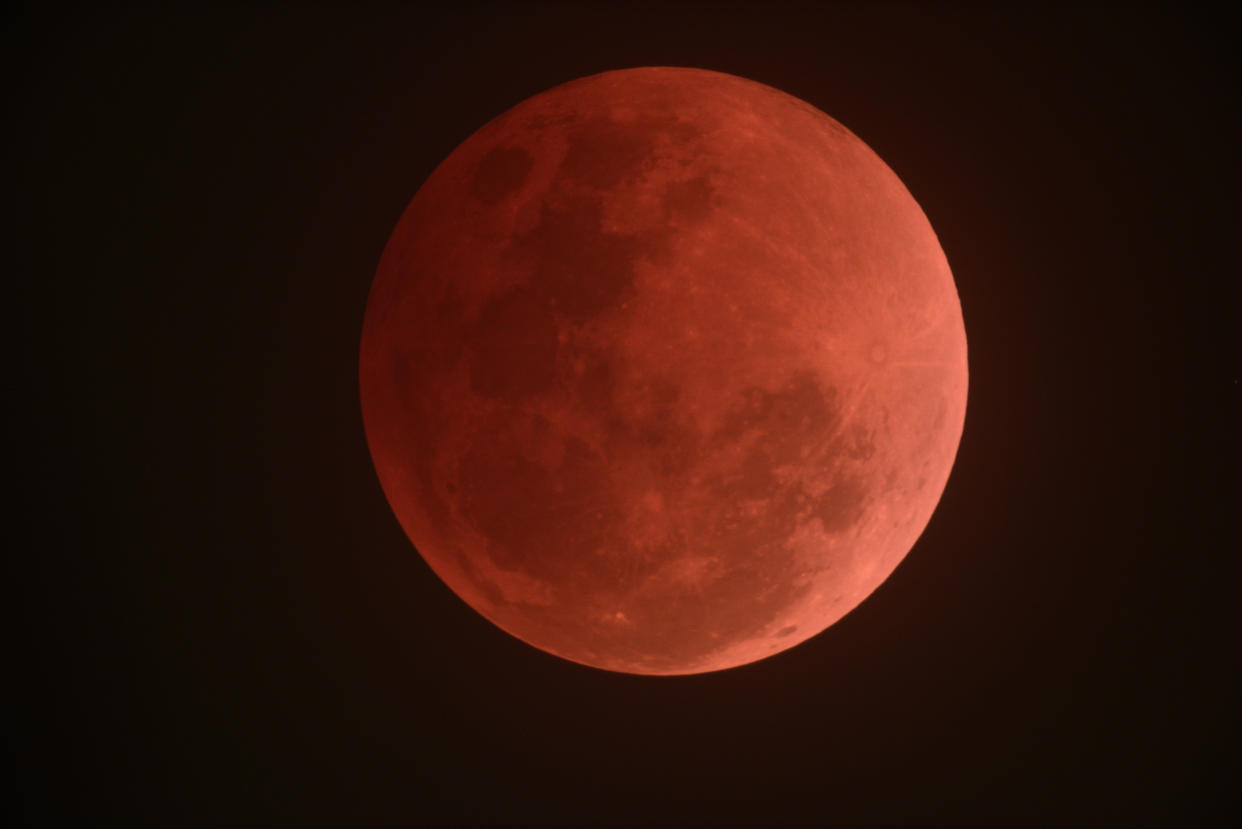'Super blue blood moon' wows 5,000 people at Science Centre Singapore

Despite the initial weather scare, around five thousand skywatchers at the Science Centre Singapore (SCS) Observatory on Wednesday night (31 January) managed to catch sight of a rare celestial event that last occurred over 150 years ago in 1866.
Astronomy enthusiasts will need to wait more than 10 years to catch the next occurrence of Wednesday’s celestial trifecta – the combination of a blue moon, a supermoon and a blood moon – on 31 December, 2028.
In a viewing session held from 7.30pm to 10.30pm at the observatory, the crowd queued to take turns viewing the moon via 11 portable telescopes set up by amateur astronomer group The Astronomical Society of Singapore (TASOS) and the centre. Private telescopes were not allowed at the free event.
“Before that, it was raining and cloudy, but the sky (at 9.20pm) is totally clear. We are very lucky that this round’s total eclipse lasts 70 minutes,” said Soh Kim Mun, 52, secretary of TASOS.
Wednesday’s partial eclipse started at 7.48pm, with the full eclipse commencing at 8.51pm and lasting till 10.08pm. The moon reached its fullest at 9.27pm, with the partial eclipse ending at 11.11pm.
While there is no need for any special equipment to view Wednesday’s moon, watching it via binoculars and telescopes enhances the experience, said the SCS.
He Rui Hua, 33, a researcher at the Nanyang Technological University who reached the observatory at 6.30pm, attended the event in a group of six, including her two children, aged five and seven.
“We would like the children to experience (the activities of) stargazing and (watching) the moon. It’s a special moon tonight (and) it’s their first time watching a lunar eclipse,” said He.
Jacquelyn Loke, 33, a business analyst, was spotted in the queue at around 7.45pm with her boyfriend Gavin Teo, 30, a banker.
“I wanted to come here to see it with a telescope. I wanted to see the moon’s aurora,” said Loke, who has an interest in astronomy.
The main telescope at the Science Centre Observatory was also used to project a live feed of the eclipse on Facebook.
Elsewhere, over 100 people gathered to watch the eclipse at Mayflower Market & Food Centre in Ang Mo Kio in a viewing session organised by Kebun Baru Heights, Kebun Baru Grove Residents’ Committees (RCs) and interest group Stargazing Singapore.
Gerarddyn Dde Britto, 44, founder of Stargazing Singapore said, “Initially it was cloudy but it cleared up about 10 minutes into the moon’s totality (around 9.10pm) till 10.10pm.”
“It was exciting to show the residents that this is the lunar eclipse,” said the full-time homemaker. “The last lunar eclipse I saw was many years back and that one was very coppery and dull red. This one was pretty reddish-orange.”
Celestial trifecta
As is the case with all total lunar eclipses, Wednesday’s moon appeared red or coppery – otherwise known as a blood moon – which happens when it enters the darkest part of the earth’s shadow called the umbra.
What makes Wednesday’s occurrence rare, however, is that the eclipse unfolds during a blue moon and a supermoon.
Taking place once in every two years and eight months on average, a blue moon, named after the rarity of its occurrence, is a second full moon within a month. Typically, only one full moon occurs in a calendar month.
This year, however, will see the occurrences of two blue moons, with the second blue moon occurring on 31 March.
Wednesday’s blue moon is also a supermoon, a phenomenon that occurs when a full moon or new moon coincides with the point in the moon’s orbit closest to Earth.
As such, the moon appears “as much as 14 per cent bigger and 30 per cent brighter”, according to the National Aeronautics and Space Administration.
The moon will also be the second closest of this year after the one on 1 January.
Apart from Singapore, the eclipse will be visible from the western United States and Canada across the Pacific Ocean to most of Australia and China, as well as northern polar regions.
The next total eclipse in 2018 will occur on 28 July during a micro-moon, which happens when a full moon or new moon coincides with the point in the moon’s orbit farthest away from Earth.
“If you missed (tonight’s eclipse), the next one on 28 July will occur after midnight, at around 2am onwards,” said Albert Ho, 59, president of TASOS.
Related stories:
Rare ‘blue supermoon’ total eclipse to occur in Singapore on 31 January
Why Thaipusam festivities in Singapore end earlier this year


